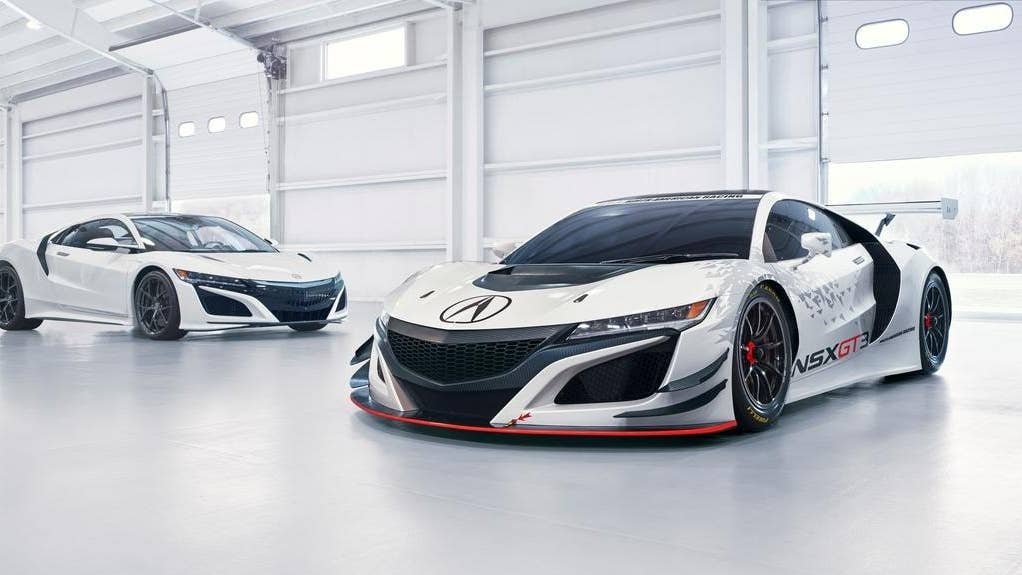Why Is Everybody Building All These GT3 Race Cars?
We tell you why.

Even a casual sports car racing fan might be wondering: What’s with all the GT3 race cars? The latest, of course, is the Acura NSX GT3 car unveiled last week at the New York International Auto Show, which will hit the tracks in the U.S. and elsewhere in 2017. Lexus is hard at work on its GT3 car, which will debut in the U.S. at the Detroit Grand Prix this summer.
Indeed, everyone from Cadillac to Lamborghini is building GT3 cars, and there’s one big reason for it: GT3 is one of the few classes of racecars that the factory can actually realize a potential profit on.
Why? Because about 50 racing sanctioning bodies around the world, including IMSA WeatherTech SportsCar Championship and Pirelli World Challenge, recognize the FIA GT3 specifications. That means that Porsche, for example, can build a bunch of Porsche 911 GT3 cars and, with no significant changes, sell them to racers in sanctioning bodies all over the place.
In the Mobil 1 Twelve Hours of Sebring, there were GT3 cars from Porsche, Audi, Lamborghini, Ferrari, BMW, Aston Martin, and a lone Dodge Viper. If you are thinking that some of these cars might automatically be faster than others, you’d be right, but part of the FIA sanction is balancing performance, usually through weight and the size of engine intakes. If you drove your Viper to Sebring, your car had considerably more horsepower than the ViperExchange.com Viper on the track.
There’s also an accepted price range for GT3 cars – about $500,000 per car, plus maybe $350,000 in spares. Depending on the company – and this is one reason why customers might choose one manufacturer over another – they might throw in an engineer and a factory driver for some races.
Bottom line, then, is the bottom line: You can get started for under $1 million in GT3 racing, which some people consider a genuine bargain. We’re happy for those people.
As for the new Acura GT3, which will probably be fielded first by RealTime in the Pirelli World Challenge series: The NSX GT3 will be powered by a 3.5-liter, 75-degree, twin turbocharged DOHC V6 engine using the same design specifications as the engine in the production 2017 Acura NSX, including the block, heads, valvetrain, crankshaft, pistons and dry sump lubrication system. The engine will be paired with a 6-speed, sequential-shift racing gearbox, delivering power to the rear wheels. (All-wheel-drive is considered no fair.)
Initial development of the NSX GT3 was conducted by the company’s Japan race engineering arm with testing on race circuits in Europe and Japan. Additional development, testing and final homologation to FIA GT3 global racing specifications is currently being undertaken by the company’s North American race engineering group, Honda Performance Development (HPD), in Santa Clarita, California.
“The NSX was designed as a pinnacle expression of Acura Precision Crafted Performance, and we’re looking forward to proving out its ultimate performance capabilities in GT3 racing,” said Art St. Cyr, president of Honda Performance Development. “We’ll be working with the NSX engineering teams in Ohio and Japan to bring our dream of a truly world-class new Acura NSX racecar to fruition.”
